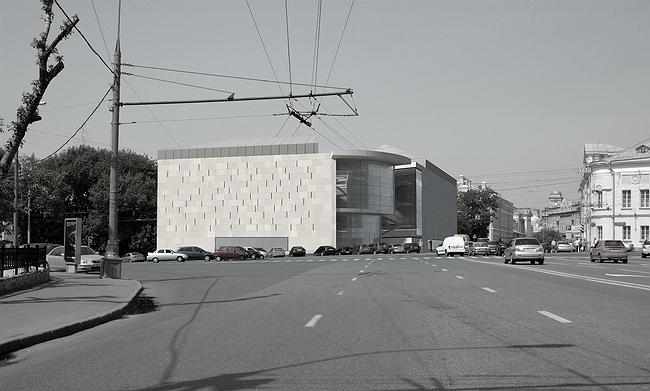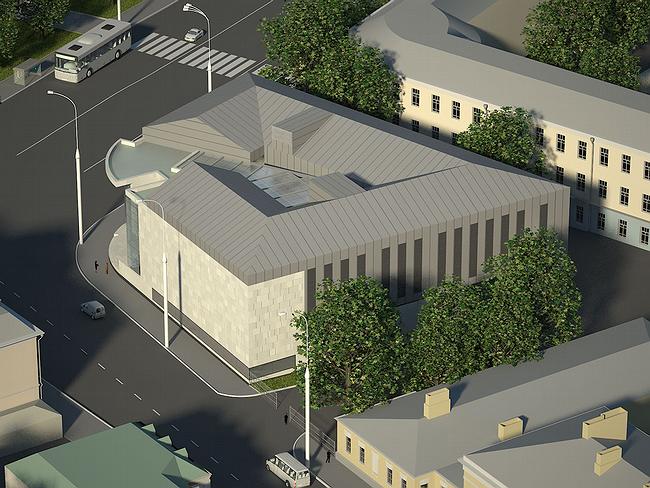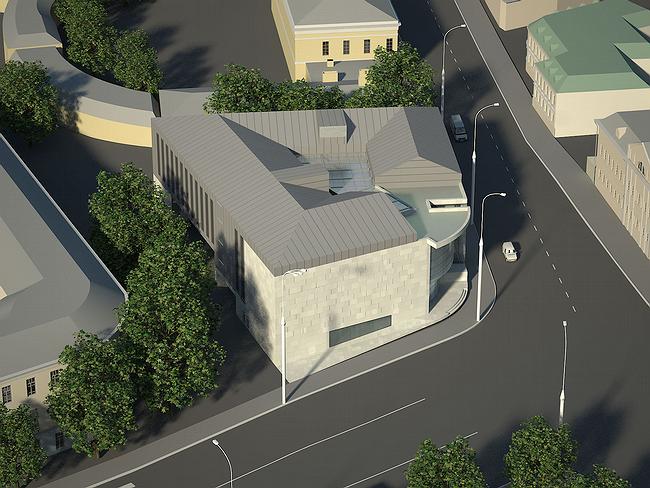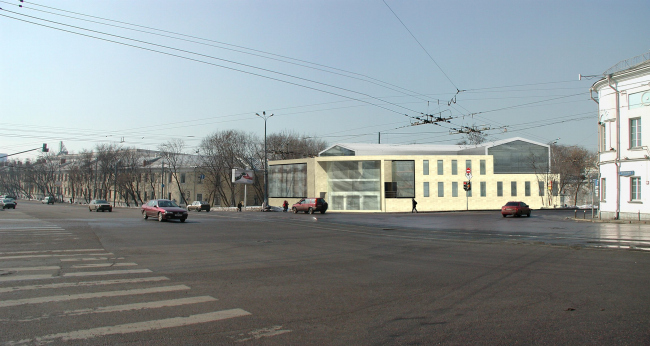|
The project of the Musical Instruments museums that we had written about has recently been changed: it got one more store and gained in integrity.
The Moscow major suggested that the museum should be given more land to build on so that it would get more exhibition space.
The land plot is situated between the district of empire townhouses and the emptiness of the Yausa Gates, the Square and road junctions. The architects’ main idea was the image of ancient forum or agora – a small square surrounded by houses, an artists’ village. Then the square of the project started to grow, and the houses merged into an agglomeration of different volumes – of stone and metal, constructivist and empire, that looked as if they were caught during the process of amalgamation. And suddenly the total area was to be increased from 8560 up to 10900 square metres.
The building got an additional store and completely lost the windows of ‘traditional’ empire proportions. New embrasures are narrow vertical slits between composite boards that are alternated by narrow niches. This technique makes the surface resemble stonewall. According to Dmitry Alexandrov, this is a typical example of contextual project – that is, a reference to local history. Here the wall of the White City was built in the 16th c. (and demolished in the 18th c.) Thus the building reminds of a defensive wall.
This trick helps to disguise the increased size of the building. It is difficult to grasp how many stores are there: one sees either large spots of glass, or the fine rhythm of stone-work.
Fantastic views on the square and the bell-tower are preserved by round glass window at the corner. The combination of closed walls cut through by embrasures and the lightness of the round corner window creates an interesting effect – it looks as if the closed and austere mass is broken at its corner, giving way to fragile transparency of the round form growing upwards. The house as an architectural parallel to organ is subjected to a giant mechanism hidden inside.
None
None
None
None
None
None
None
|






